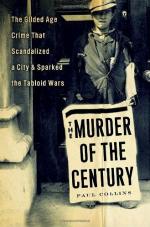|
This section contains 7,935 words (approx. 27 pages at 300 words per page) |

|
SOURCE: “Concepts of Society and the Practice of Fiction—Symbolic Responses to the Experience of Change in Late Nineteenth Century America,” in Impressions of a Gilded Age: The American Fin de Siecle, edited by Marc Chenetier and Rob Kroes, Amerika Institut, Universiteit van Amsterdam, 1983, pp. 77-95.
In the following essay, Ickstadt argues that in response to the increasing fragmentation of American society in the Gilded Age, many authors attempted to create a sense of community through utopian symbolism.
What has fascinated me for quite some time is the obvious affinity between the aesthetic, the moral, and the social imagination in late 19th century America. The proliferation of literary utopias comes to mind immediately, of course, but is only one of many factors—towards the end of the century one of diminishing importance at that. Howells's defence of realism was an argument for the novel's and the writer's social...
|
This section contains 7,935 words (approx. 27 pages at 300 words per page) |

|


